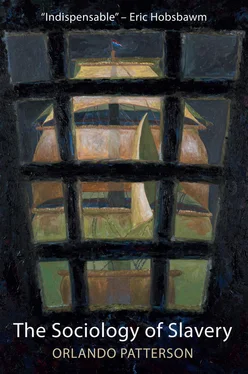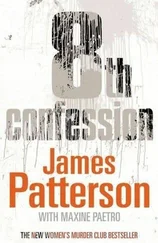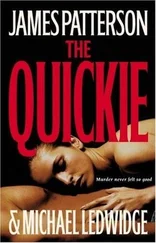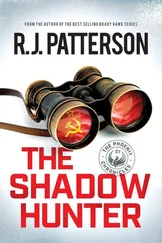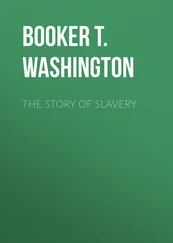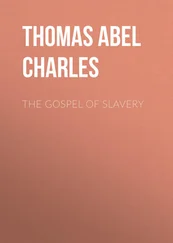The Sociology of Slavery was the first book-length study of Jamaican slavery and slave society. It is also among the first studies in English to focus in its entirety on the culture, social organization, cultural life and attitudes and modes of resistance of the enslaved, in the New World. There were, of course, many book-length and other studies on Jamaica before, but they were focused mainly on other aspects of the society – its politics, economy, demography, flora and fauna, climate, the white ruling class and so on, or general studies with a chapter on slavery in general. Oddly, even the more recent scholars of Jamaican history who immediately preceded me seemed to have deliberately avoided any direct treatment of the subject. Douglas Hall, for many years chair of history at UWI, wrote his dissertation and most important work , Free Jamaica , 6on the immediate post-emancipation period, the same relatively brief period covered by Philip Curtin 7in his published dissertation, Two Jamaicas . Indeed, with the notable exceptions of C. L. R. James’ Black Jacobins (first published in 1938), Eric Williams’ The Negro in the Caribbean (1942) 8and Capitalism and Slavery (1944), 9and Elsa Goveia’s Slave Society in the British Leeward Islands at the End of the Eighteenth Century , 10which appeared two years before The Sociology of Slavery , this avoidance of slaving and the enslaved as the focus of research, was true of all the English-speaking historians writing on the West Indies. Reference was, of course, made to the enslaved in many of these earlier studies, but rarely to their way of life, and no one had written a book-length study. I drew on the most important of these studies, especially Lowell Joseph Ragatz’s The Fall of the Planter Class in the British Caribbean, 1763–1833, 11Frank W. Pitman’s The Development of the British West Indies, 1700–1763, 12George Roberts’ 13 Population of Jamaica, and M. G. Smith’s paper on the early 19th-century British Caribbean. 14The authors of the latter two were my undergraduate teachers, and Smith’s paper was of special importance in pointing the way towards how a sociologist would approach the study of slavery. Although he wrote nothing on slavery in Jamaica, another of my teachers, the British anthropologist, Raymond Smith, was important in my study of the enslaved family, since I adapted his theory of the developmental cycle of the household, which he had derived for the anthropologist, Meyer Fortes, in writing about the subject.
It is hard to imagine it now, but before The Sociology of Slavery , with the partial exception of Kenneth Stampp, there was not a single book-length study in English focused on the social and cultural practices of the enslaved and their responses to their enslavement, by any professional historian writing on the West Indies and North America. U. B. Phillips, the dominant, white-supremacist historian on U.S. slavery up to the middle of the century, wrote on aspects of enslaved life, especially in his slightly less racist, Life and Labor in the Old South , 15but as part of his wider pro-Southern study of the slave South, as were similar chapters in the broader studies of plantation slavery in Mississippi by Charles Sydnor. 16A change occurred among white scholars following the civil rights revolution, especially in the revisionist work of Kenneth Stampp, 17which challenged the prevailing pro-Southern works of U. B. Phillips and others; and there was the important comparative works by Tannenbaum 18and Klein. 19While anti-slavery and sympathetic to the enslaved, none of these works by white historians was wholly focused on the life of the enslaved and culture although Stampp’s book was exceptional in devoting over a third of the volume to these subjects. Both Tannenbaum’s and Klein’s works were concerned primarily with the question of the differences between Latin American and U.S. slavery. Stanley Elkins’ 20work, which compared slavery with the Nazi concentration camp in arguing that there was more than a core of truth in the infantilized image of blacks reflected in the slaveholder’s Sambo stereotype, was indeed focused on the life and thoughts of the enslaved and, while his comparison with the Nazi concentration camps was not as far off the mark as so many critics claimed, he erred, not so much in identifying similarities in the psychological responses of Jewish inmates and slaves but in his interpretation of the meanings and significance of these behavioural and psychological strategies of the enslaved. The work was published in 1959 and still in vogue when I was researching The Sociology of Slavery . Indeed, my critique of the work’s basic argument was among the first to be published and became the concluding chapter of Ann J. Lane’s collection of critical writings on the Elkins book. 21
The situation was different among the pre-civil rights era of Black American intellectuals, historians and sociologists, among whom the experience of slavery and its consequences for later Black life was of great importance and figured prominently in their debate with racist scholars in the Jim Crow South. I read many of these Black scholars as an undergraduate, partly at the urging of one of my teachers, Lloyd Brathwaite. A passage from a paper written in 1898 eloquently expressed DuBois’ views on what was missing in the study of slavery: that while a great deal had been written on the legal and political aspects of the subject, ‘of the slave himself, of his group life and social institutions, of remaining traces of his African tribal life, of his amusements, his conversion to Christianity, his acquiring of the English tongue … of his whole reaction against his environment, of all this we hear little or nothing, and would apparently be expected to believe that the Negro arose from the dead in 1863’. 22Sixty-four years later, that is exactly how I felt about the study of the Jamaican past as I prepared to enter the archives of the British Records Office and British Museum.
Not long after The Sociology of Slavery was published, the situation changed dramatically and a tide of scholarly works on Jamaica appeared. These works fall into two broad categories, which may be called dominion and doulotic studies. Dominion studies are those primarily concerned with the rule and rulers of the island; the nature of its macro-level socio-political system and economy, in the context of which its enslaved, as human capital, are considered; and, in keeping with one common meaning of the term, studies on the island’s existence as ‘a country that was part of the British empire but had its own government’ (Merriam-Webster). Doulotic studies are those mainly concerned with the island’s enslaved population, seen from the enslaved’s perspective, their demographic development and modes of socio-cultural survival, resistance, and adjustment to the system; the micro-level relations of domination between enslaver and enslaved; the meso-level nature and conflicts within the plantations, pens and other localized units of production, as systems of total domination; and the functioning of slavery as an institutional process. 23
Jamaica has been fortunate in having outstanding scholars who have written major works from one or other, or both, of these perspectives. B. W. Higman surely ranks near, or at the top, of scholars who work on West Indian slavery with a special focus on Jamaica, with works from both perspectives. His monumental study of the historical demography of the West Indies serves scholars working from both perspectives and will continue to do so for years to come. 24For decades, before retiring to Australia, he worked in Jamaica, producing world-class scholarship on Jamaican and West Indian slavery, from his base at the University of the West Indies where he trained generations of West Indian historians. His meso-level work on Montpellier plantation 25shifts the focus to the doulotic and the 18th century and stands comparison with the Jamaican part of Dunn’s masterpiece comparing plantations in Jamaica and Virginia. 26I hasten to add that I disagree with several findings in Higman’s works, especially his revisionist view of the enslaved’s familial relations, which was too influenced by U.S. cliometric studies, and his rather too sanguine view of the system as a whole but, having already published these disagreements, there is no need to repeat them here. 27Approaching Higman’s and Dunn’s doulotic works in depth and quality are those of Trevor Burnard who has fast become the most prolific student of Jamaican slavery, writing from both perspectives. His study of Thomas Thistlewood’s relations with his enslaved workers 28brings the study of Jamaican slavery down from that of the meso-level unit of the plantation to the micro-level of what Marx called the ‘relation of domination’, a term I borrowed for my own comparative study of slavery. If there ever were any doubts about the conclusion I arrived at in The Sociology of Slavery, that Jamaican slave society was a Hobbesian state of savage exploitation and, with the possible exception of the enslaved in the Laurion silver mines of ancient Attica, the most brutal in all history, Burnard’s probing re-examination 29of Thistlewood’s world has disabused us of them. An impressive body of work is further illuminating the doulotic perspective on the system, a rigorous recent example of which being Justin Robert’s 30comparative study of the kinds and intensities of labour activities and the sickness and mortality rates of the enslaved in Jamaica, Barbados and Virginia, which nicely complement’s Dunn’s comparative work.
Читать дальше
